
Discovering hidden treasures: 7 places you wouldn't believe are in Spain
Spain, a land of history, culture, and natural beauty, is known for its iconic tourist destinations like Barcelona, Madrid, and Seville. However, beyond these world-renowned destinations, Spain is home to a number of hidden gems, places that surprise and captivate those lucky enough to discover them. From quaint villages to stunning natural sites, here are seven places you probably wouldn't believe are in Spain.
Las Médulas, León: a place full of history
Las Médulas is a natural monument located in the region of El Bierzo, in the province of León, autonomous community of Castilla y León. This place, declared a World Heritage Site by UNESCO in 1997, is the result of ancient Roman mining exploitation, which makes it a living testimony of engineering and human work from more than two thousand years ago.
The history of Las Médulas dates back to the 1st century AD, when the Romans began to extract gold from the mountains using a technique known as “ruina montium”. This method involved using large amounts of water to erode the mountainsides and thus expose the gold deposits hidden within. The result is a surreal landscape of whimsical shapes, with hills and canyons sculpted by the hand of man.
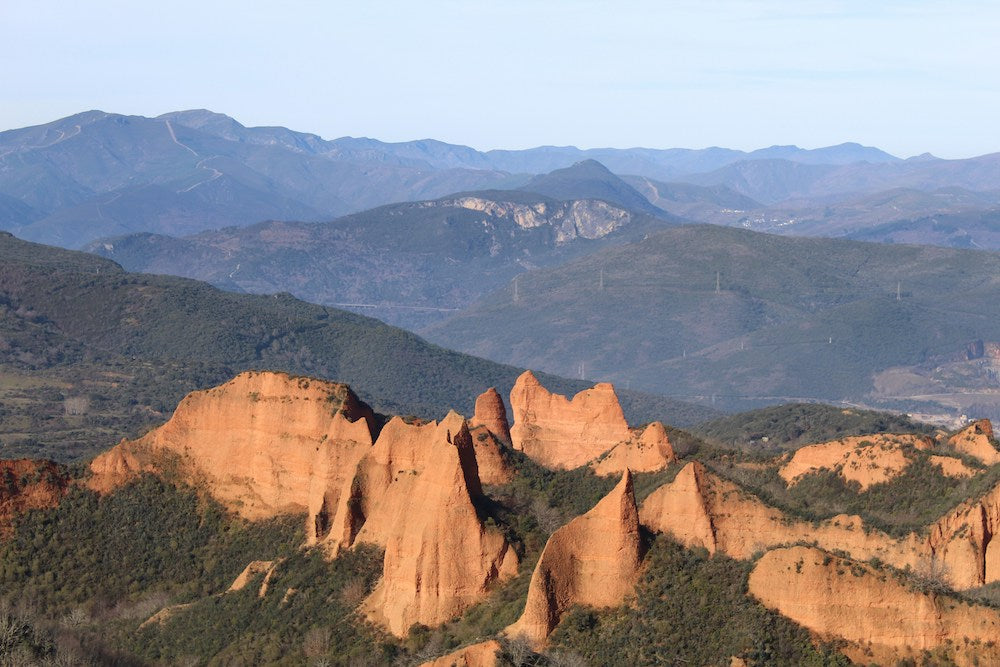
Today, Las Médulas is a popular tourist destination, where visitors can explore this stunning landscape through a network of well-marked trails. These paths wind between the ruins of ancient Roman buildings and through tunnels dug into the rock, providing a unique experience for lovers of history and nature.
In addition to its historical and scenic value, Las Médulas is also a refuge for wildlife, with a great diversity of flora and fauna that has thrived in this unique environment. Along the trails, visitors can spot birds of prey, such as the golden eagle and peregrine falcon, as well as mammals such as roe deer and wild boar.
Cudillero, Asturias: hidden treasure on the northern coast of Spain
A hidden treasure on the northern coast of Spain, Cudillero is a picturesque fishing village that captivates with its unique charm. Located in the region of Asturias, this destination surprises visitors with its stunning location between cliffs and green hills, creating a postcard-perfect setting straight out of a fairy tale.
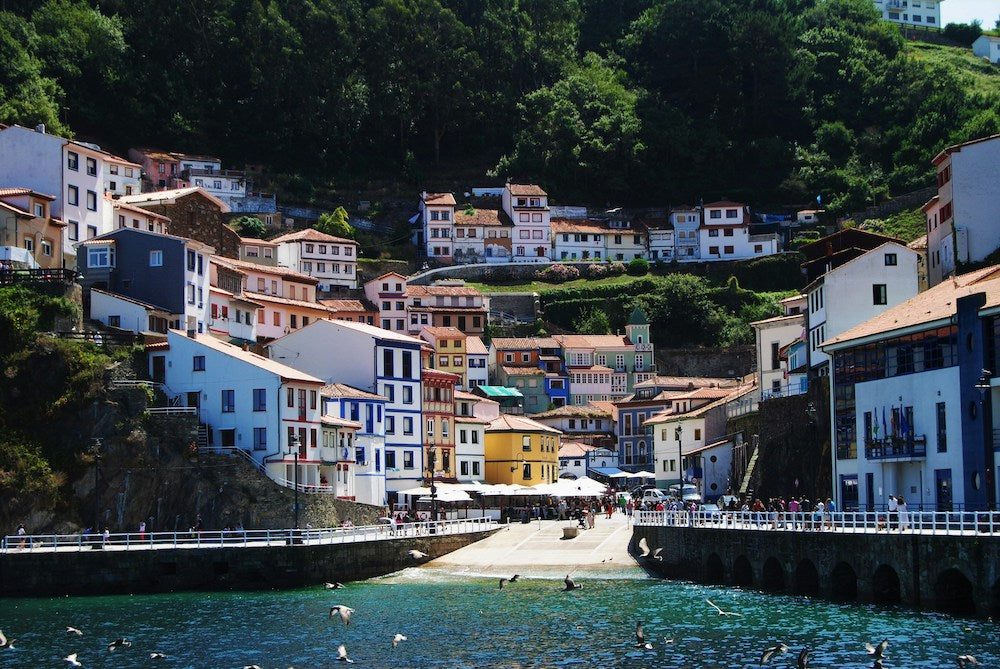
The heart of Cudillero beats in its port, a picturesque corner full of life and colour. Here, fishermen's houses are piled on top of each other on the steep slopes, creating a spectacular view that takes your breath away. The vibrant contrast between the pastel tones of the facades and the deep blue of the sea creates a colour palette worthy of admiration.
Exploring the narrow cobbled streets of Cudillero is like immersing yourself in a labyrinth of history and tradition. Every corner tells a story, from the old stone houses with their wooden balconies to the small squares full of life. The winding alleys invite you to get lost and discover the best kept secrets of this charming town.
But the real gem of Cudillero is its gastronomy. Local restaurants offer a delicious variety of typical Asturian dishes, from the famous fresh fish and seafood to the exquisite fabes, white beans that are the soul of the region's cuisine. There is no better way to enjoy the authentic essence of Asturias than to delight in a feast of flavours in one of Cudillero's cosy restaurants, where Asturian hospitality is felt in every dish.
Irati Forest, Navarra: the green treasure of northern Spain
The Irati Forest, located in the north of Spain, in the autonomous community of Navarra, is a true natural paradise that captivates with its exuberant beauty and magical atmosphere. This green treasure is one of the largest beech and fir forests in Europe, extending over a vast territory that invites exploration and contemplation.
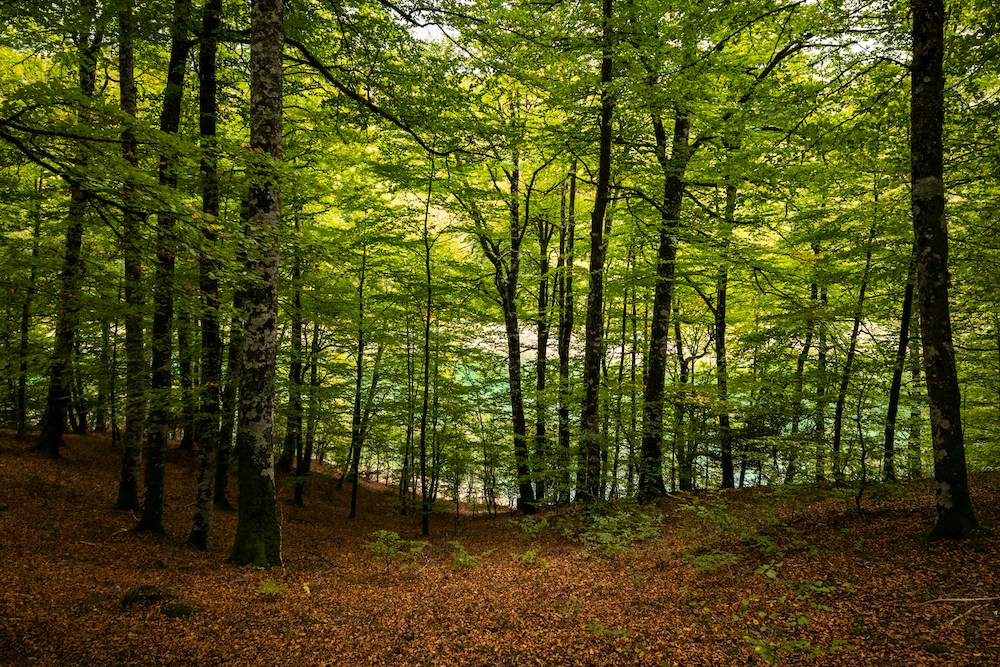
What makes the Irati Forest truly special is its spectacular landscape, which changes with the seasons. In autumn, the forest is dressed in a palette of warm and vibrant colours, with golden, reddish and ochre tones that create a stunning visual spectacle. It is the perfect time to take walks among the fallen leaves and capture the magic of the forest in photographs that seem straight out of a fairy tale.
But the Irati Forest also dazzles at other times of the year. In spring, the forest awakens from its winter slumber with a burst of life and colour, while in summer it offers a cool, shady refuge from the stifling heat. Each season has its own unique charm, ensuring that the Irati Forest is an attractive destination at any time of the year.
In addition to its scenic beauty, the Irati Forest is a paradise for hiking and nature lovers. An extensive network of trails meanders through the forest, offering routes of all levels of difficulty and length. From gentle riverside walks to challenging climbs to the surrounding mountain peaks, there is something to satisfy all outdoor lovers.
Ronda, Andalusia: a landscape worthy of a fairy tale
In the vast treasure trove of Andalusia, where iconic cities such as Seville and Granada shine with their own light, Ronda emerges as a hidden gem, waiting to be discovered. Majestically situated atop a stunning gorge, this city captivates with its spectacular panoramic views and a rich history that weaves together Roman and Moorish eras, creating a unique cultural tapestry.
Ronda's history dates back to time immemorial, when ancient civilizations left their mark on this fertile land. From the Romans to the Arabs, each culture left its legacy, creating a melting pot of influences that is reflected in the city's architecture, gastronomy and traditions.
One of Ronda’s highlights is its iconic Puente Nuevo, a masterpiece of engineering that soars majestically over the deep canyon of the Guadalevín River. Built in the 18th century, this bridge not only connects the upper and lower parts of the city, but also offers stunning views of the surrounding landscape, becoming an iconic symbol of Ronda and a must-see for visitors.
But Ronda is much more than its famous bridge. The city is dotted with historic monuments, from ancient walls and gateways to palaces and stately homes that tell the story of its glorious past. Cobbled alleys invite you to get lost and discover the most picturesque corners of the city, while lively squares offer a respite to enjoy a glass of local wine and watch daily life go by.
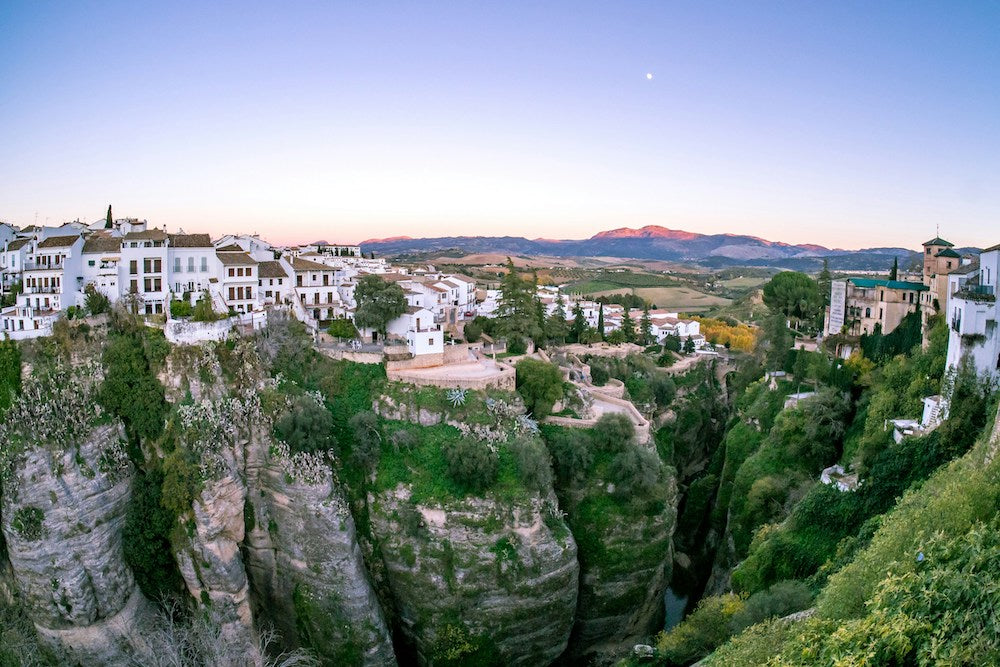
In addition to its rich history, Ronda is also a paradise for nature and outdoor sports lovers. The surrounding area offers a variety of hiking and cycling routes that meander through stunning landscapes, from rugged canyons to fertile valleys dotted with olive trees and vineyards.The more adventurous can even try their hand at adventure sports such as canyoning and rock climbing, which offer an exciting way to explore the natural beauty of the region.
Ebro Delta, Catalonia: where nature meets gastronomy
The Ebro Delta, located in the region of Catalonia, is a true natural paradise that offers a unique experience for lovers of nature and good food. This vast delta, formed by the sediments of the Ebro River, is one of the most important wetlands in Europe and a vital refuge for an impressive variety of water birds and wildlife.
Exploring the Ebro Delta is like immersing yourself in a world of changing landscapes, where vast rice fields mix with tranquil lagoons and reed forests that gently sway in the breeze. The diversity of habitats offers a perfect setting for spotting migratory birds such as flamingos, herons and ospreys, making the delta a dream destination for birdwatchers from all over the world.
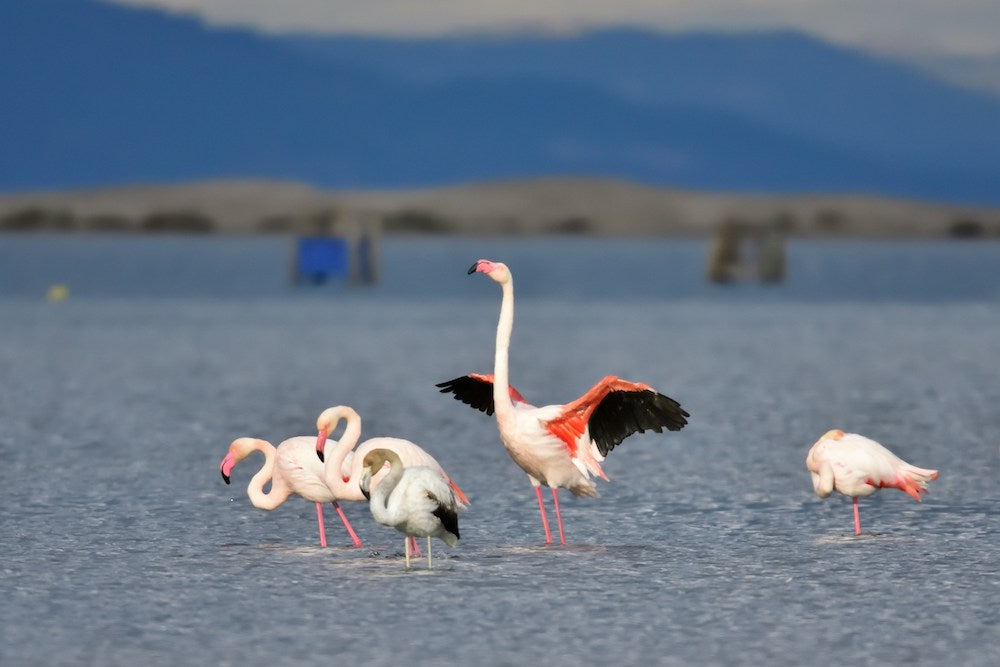
But the Ebro Delta is not just a spectacle for the senses; it is also a feast for the palate. The region's rich culinary tradition is reflected in emblematic dishes such as seafood paella, prepared with the fresh seafood that abounds in these waters, and black rice, a culinary delight made with squid ink that delights locals and visitors alike.
As well as enjoying the exquisite local cuisine, visitors to the Ebro Delta can take part in a wide range of outdoor activities. From boat trips through the delta’s canals to exciting wildlife safaris, there is something for all tastes and ages. The more adventurous can even embark on exciting kayaking excursions or discover the secrets of the delta via hiking trails that meander through rice paddies and riverside forests.
Cadaqués, Catalonia: inspiration and coastal beauty hand in hand
Located on the stunning Costa Brava in the province of Girona, Cadaqués is much more than just a seaside town; it is a haven for artists and a cultural gem that has captivated visitors from around the world for decades.
Cadaqués welcomes you with its picturesque cobbled streets and white houses that intertwine like a labyrinth. Every corner is a work of art, where traditional architecture merges with the Mediterranean atmosphere, creating an enchanting setting where time seems to stand still. The narrow streets are dotted with small craft shops, art galleries and cozy cafes where you can spend hours watching life go by.
But the real gem of Cadaqués is its rugged coastline and crystal-clear waters that lap at white sandy beaches. From the seafront, you can admire spectacular views of the Mediterranean Sea, with its turquoise hues that blend with the intense blue of the sky. Here, you can enjoy days of sun and sea, practicing water sports such as snorkelling, diving or simply relaxing on the beach and letting yourself be caressed by the sea breeze.

But what makes Cadaqués truly unique is its connection to art and culture. This charming village was once home to the famous surrealist painter Salvador Dalí, whose influence can be felt in every corner. The Salvador Dalí House-Museum in Portlligat is a place of pilgrimage for art lovers, where you can explore the studio and life of the creative genius behind some of the most iconic works of the 20th century.
In addition to the Dalí House-Museum, Cadaqués is also home to a vibrant art scene, with numerous galleries and exhibitions showcasing local and international talent. Artists and bohemians continue to find inspiration in the stunning landscapes and unique atmosphere of this coastal town, creating a creative vibe that permeates every corner.
Lagunas de Ruidera, Castilla-La Mancha: a hidden gem in the heart of Spain
In the heart of the vast Castilian plain, in the autonomous community of Castilla-La Mancha, lies an oasis of serenity and natural beauty: the Lagunas de Ruidera. This captivating system of interconnected lagoons is a hidden treasure among rolling hills and lush forests, offering visitors an idyllic escape from the hustle and bustle of everyday life.
What makes the Lagunas de Ruidera truly exceptional is their astonishing clarity and purity. Their crystal-clear waters reflect the hues of the sky and the intense greens of the surrounding vegetation, creating a visual spectacle that seems straight out of a fairy tale. Diving into these calm waters is like entering a world of peace and harmony, where time stands still and worries fade away.
But the Lagunas de Ruidera are not just a feast for the eyes; they are also a paradise for water sports and adventure lovers. Kayaking, paddleboarding, swimming: the options are endless for those who wish to explore these crystal-clear waters and discover the most hidden corners of this unique aquatic landscape. The most daring can venture to explore the underwater caves and grottos that hide beneath the surface, while the calmer ones can simply let themselves be carried by the current and enjoy the gentle murmur of the water.
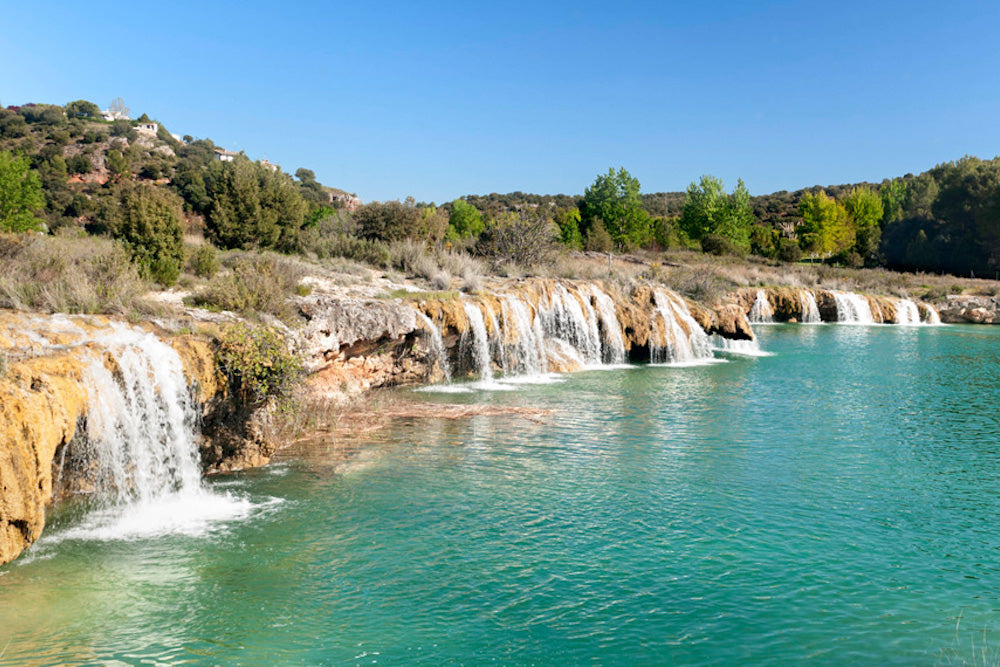
But even for those who prefer a more relaxed experience, the Lagunas de Ruidera offer a haven of peace and tranquility. The numerous viewing points and rest areas scattered around the park allow visitors to enjoy stunning panoramic views and breathe fresh air while relaxing in the serenity of the natural surroundings.
In addition to its scenic beauty and diversity of activities, the Lagunas de Ruidera also have a rich history and cultural heritage that deserves to be explored. Ruins of ancient water mills and stone houses dot the landscape, recalling the long history of this place and its importance as a source of life and livelihood for local communities throughout the centuries.
The Lagunas de Ruidera are much more than just a tourist destination; they are an oasis of natural beauty and tranquillity in the heart of Spain, a place where adventure and serenity meet in perfect harmony. Whether exploring its crystal-clear waters, enjoying its stunning views or simply letting yourself be carried away by the tranquillity of the surroundings, a visit to the Lagunas de Ruidera is an experience you won’t soon forget.
Discover Spain and all its secret corners
These are just a few examples of the many amazing places Spain has to offer. From stunning natural landscapes to charming historic towns, every corner of this beautiful country is full of surprises and wonders to discover. So next time you plan a trip to Spain, don’t limit yourself to the most well-known tourist destinations; venture further afield and discover these hidden treasures that will take your breath away.
FAQ ABOUT SPAIN
What is the best time to visit northern Spain?
The best time to visit northern Spain is during spring and summer, especially between the months of April and September. During these months, the weather tends to be milder and temperatures are more pleasant for exploring cities such as Bilbao, Santander, San Sebastián and Oviedo, as well as enjoying the stunning coastal and mountainous landscapes of the region.
What is the best time to visit southern Spain?
Southern Spain is known for its warm, sunny weather for most of the year, making it an attractive destination at any time. However, spring and autumn are often considered the best times to visit southern Spain, as temperatures are more moderate and there are fewer tourist crowds than in the summer months. Additionally, during spring, the region is at its most splendid with fields and gardens in bloom.
What lesser-known places to see in Spain?
Some lesser-known, but equally charming places to visit in Spain include Las Médulas in León, Cudillero in Asturias, Selva de Irati in Navarra, Ronda in Andalusia, the Ebro Delta in Catalonia, Cadaqués also in Catalonia, and the Lagunas de Ruidera in Castilla-La Mancha.
Are there any World Heritage Sites in Spain?
Yes, Spain has numerous UNESCO World Heritage Sites due to their cultural, historical and natural importance. Some examples include the Alhambra and Generalife in Granada, the Palau de la Música Catalana and the Hospital de Sant Pau in Barcelona, the Burgos Cathedral, the Camino de Santiago, and the Garajonay National Park in La Gomera, among many others. These sites represent a significant part of Spain's cultural wealth and diversity.


